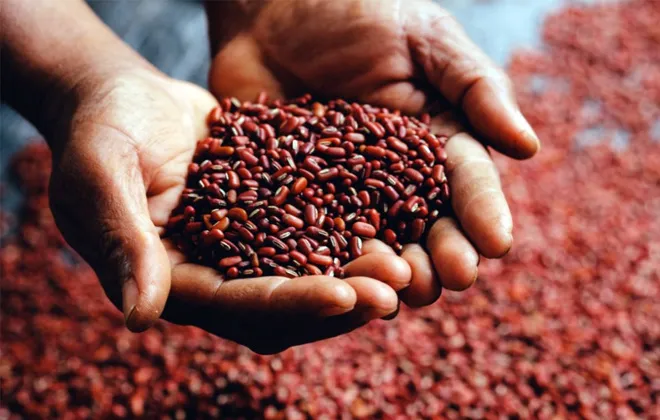Thinking about the future of global food systems has now become more critical than ever. Climate change impacts—among them, shifts in soil quality, precipitation, pest regimes, seasonal growth patterns, along with land degradation and reduction in biodiversity—have impacted agricultural and aquatic food production systems across the world. Indeed, the causal links between climate change and food security are manifesting more clearly, particularly in the developing world, where nutrition deficiency is common, as is the predominance of rain-fed, farm-centred agricultural systems. This report reimagines the future of food, and how countries of the Global South, including India, can build resilient food systems.
There is no dearth of problems associated with nutrition and public health: hunger, malnutrition, food-borne diseases, and food insecurity, among them. The World Health Organization (WHO) has found that every year, nearly 600 million people (7.5% of the global population) fall ill from eating contaminated food and 420,000 die because of it. Children under five bear 40% of the food-borne disease burden. Almost one-third of the world’s population did not have access to adequate food in 2020; three billion could not get healthy food. The Food and Agriculture Organization (FAO) has found that around 720-811 million face hunger. Undernourishment rates among children have also been rising alarmingly.
The causal links between climate change and food security are manifesting more clearly, particularly in the developing world, where nutrition deficiency is common, as is the predominance of rain-fed, farm-centred agricultural systems.
The issues of poor food safety, food insecurity, and unsustainable food systems are closely interlinked. These have been further exacerbated by climate change and the Covid-19 pandemic, and have disproportionately affected some populations more than others. The importance of access to safe and nutritious food therefore cannot be overemphasised.
With a rapidly growing human population and burgeoning demand for food, intensive use of agrochemicals—i.e. pesticides and fertilisers—has become the norm to ramp up production of livestock and crops. Without chemical pesticides, and crop protection in general, more than half of the world’s crops would be destroyed by insects, weeds, and diseases. Food production per acre would decline rapidly; the area of land used for crop cultivation would have to increase. This, in turn, would have detrimental effects on wildlife habitats and ecosystems and dilute the quality of soil due to erosion. There is also the likelihood of a rise in food prices and reduced food output.
The use of agrochemicals, however, comes at a perilous cost. Chemical contamination changes the biochemical composition of food, and can lead to a range of diseases from diarrhoea to cancer and neurodegenerative conditions, reproductive and developmental changes, and respiratory damage. In the United States (US), for instance, 35% of all cancer cases may be attributed to poor diets (i.e., low consumption of whole grains and high intake of processed food) and the chemical pesticides present in the food consumed. Some 385 million cases of acute unintentional pesticide poisoning occur annually worldwide, of which 11,000 result in deaths.
Chemical contamination changes the biochemical composition of food, and can lead to a range of diseases from diarrhoea to cancer and neurodegenerative conditions, reproductive and developmental changes, and respiratory damage.
It is pertinent to note that even as developed countries use 80% of the pesticides produced globally, more than half of the recorded deaths due to pesticides are reported in the poorer countries. This underscores the importance of food safety regulations; in the Global South, there is lack of occupational safety standards on food composition, weak enforcement of rules and regulations, and inadequate knowledge of pesticide use.
In Egypt, for example, milk samples tested in 1990 contained between 60-80% of pesticide residue, while in the US, 50% had such residue. Therefore, the nature of the food being consumed is taking a heavy toll on public health, more so in poor economies. Food and agricultural regulations around the world must pay attention not only to the increasing food demand and the need for growth in production, but also to the safety of the food being produced.
This commentary originally appeared in Hindustan Times.
The views expressed above belong to the author(s). ORF research and analyses now available on Telegram! Click here to access our curated content — blogs, longforms and interviews.




 PREV
PREV



